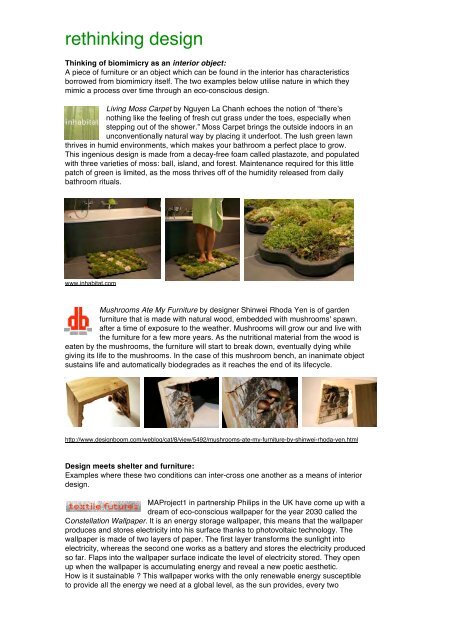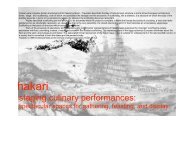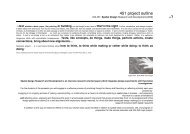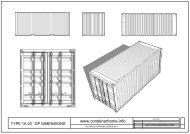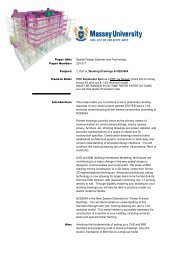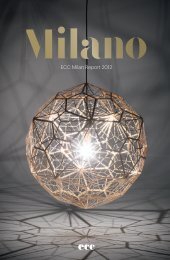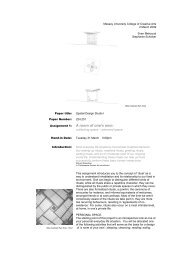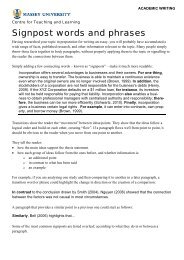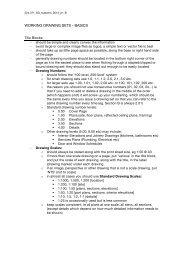rethinking design - Spatial Design@Massey
rethinking design - Spatial Design@Massey
rethinking design - Spatial Design@Massey
Create successful ePaper yourself
Turn your PDF publications into a flip-book with our unique Google optimized e-Paper software.
ethinking <strong>design</strong>Thinking of biomimicry as an interior object:A piece of furniture or an object which can be found in the interior has characteristicsborrowed from biomimicry itself. The two examples below utilise nature in which theymimic a process over time through an eco-conscious <strong>design</strong>.Living Moss Carpet by Nguyen La Chanh echoes the notion of “thereʼsnothing like the feeling of fresh cut grass under the toes, especially whenstepping out of the shower.” Moss Carpet brings the outside indoors in anunconventionally natural way by placing it underfoot. The lush green lawnthrives in humid environments, which makes your bathroom a perfect place to grow.This ingenious <strong>design</strong> is made from a decay-free foam called plastazote, and populatedwith three varieties of moss: ball, island, and forest. Maintenance required for this littlepatch of green is limited, as the moss thrives off of the humidity released from dailybathroom rituals.www.inhabitat.comMushrooms Ate My Furniture by <strong>design</strong>er Shinwei Rhoda Yen is of gardenfurniture that is made with natural wood, embedded with mushrooms' spawn.after a time of exposure to the weather. Mushrooms will grow our and live withthe furniture for a few more years. As the nutritional material from the wood iseaten by the mushrooms, the furniture will start to break down, eventually dying whilegiving its life to the mushrooms. In the case of this mushroom bench, an inanimate objectsustains life and automatically biodegrades as it reaches the end of its lifecycle.http://www.<strong>design</strong>boom.com/weblog/cat/8/view/5492/mushrooms-ate-my-furniture-by-shinwei-rhoda-yen.htmlDesign meets shelter and furniture:Examples where these two conditions can inter-cross one another as a means of interior<strong>design</strong>.MAProject1 in partnership Philips in the UK have come up with adream of eco-conscious wallpaper for the year 2030 called theConstellation Wallpaper. It is an energy storage wallpaper, this means that the wallpaperproduces and stores electricity into his surface thanks to photovoltaic technology. Thewallpaper is made of two layers of paper. The first layer transforms the sunlight intoelectricity, whereas the second one works as a battery and stores the electricity producedso far. Flaps into the wallpaper surface indicate the level of electricity stored. They openup when the wallpaper is accumulating energy and reveal a new poetic aesthetic.How is it sustainable ? This wallpaper works with the only renewable energy susceptibleto provide all the energy we need at a global level, as the sun provides, every two


